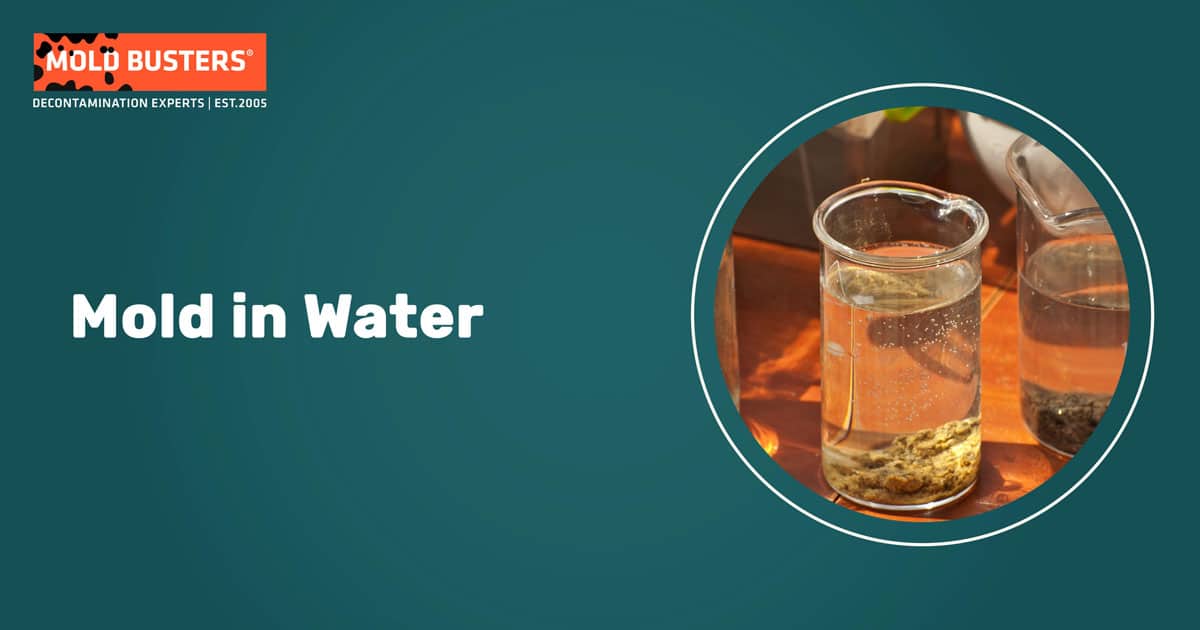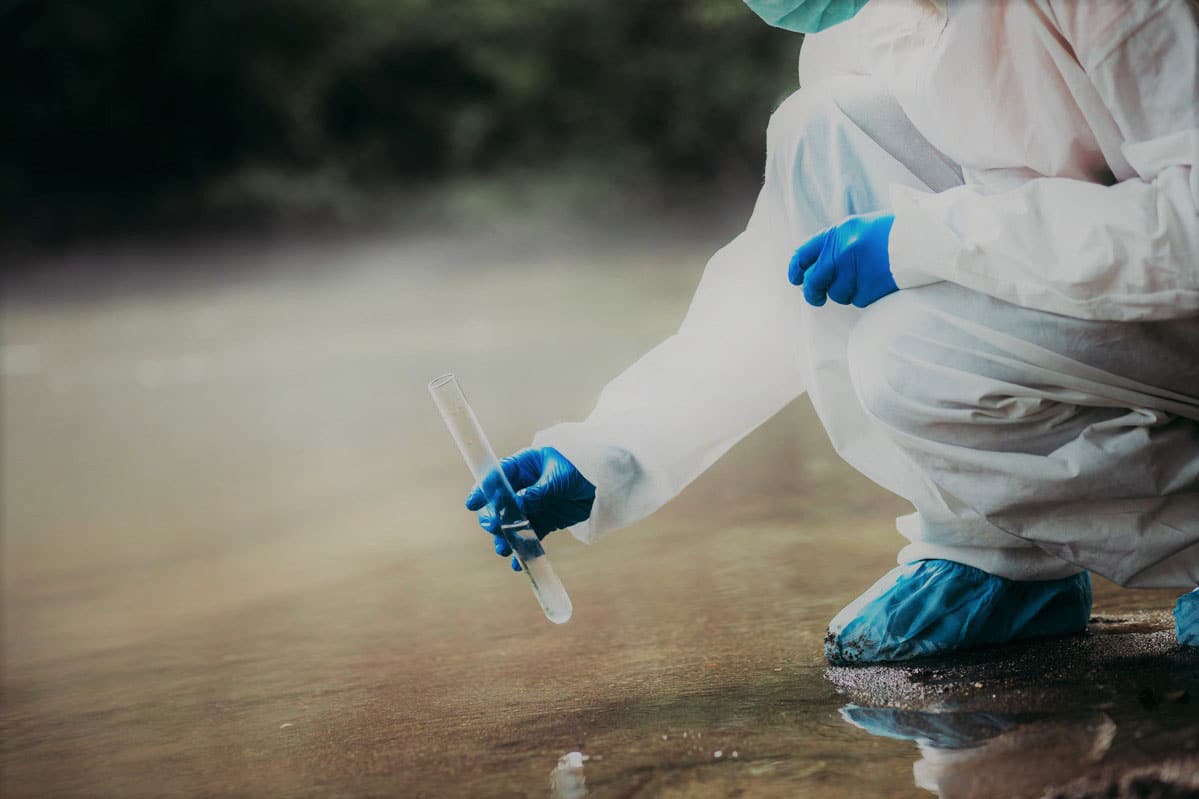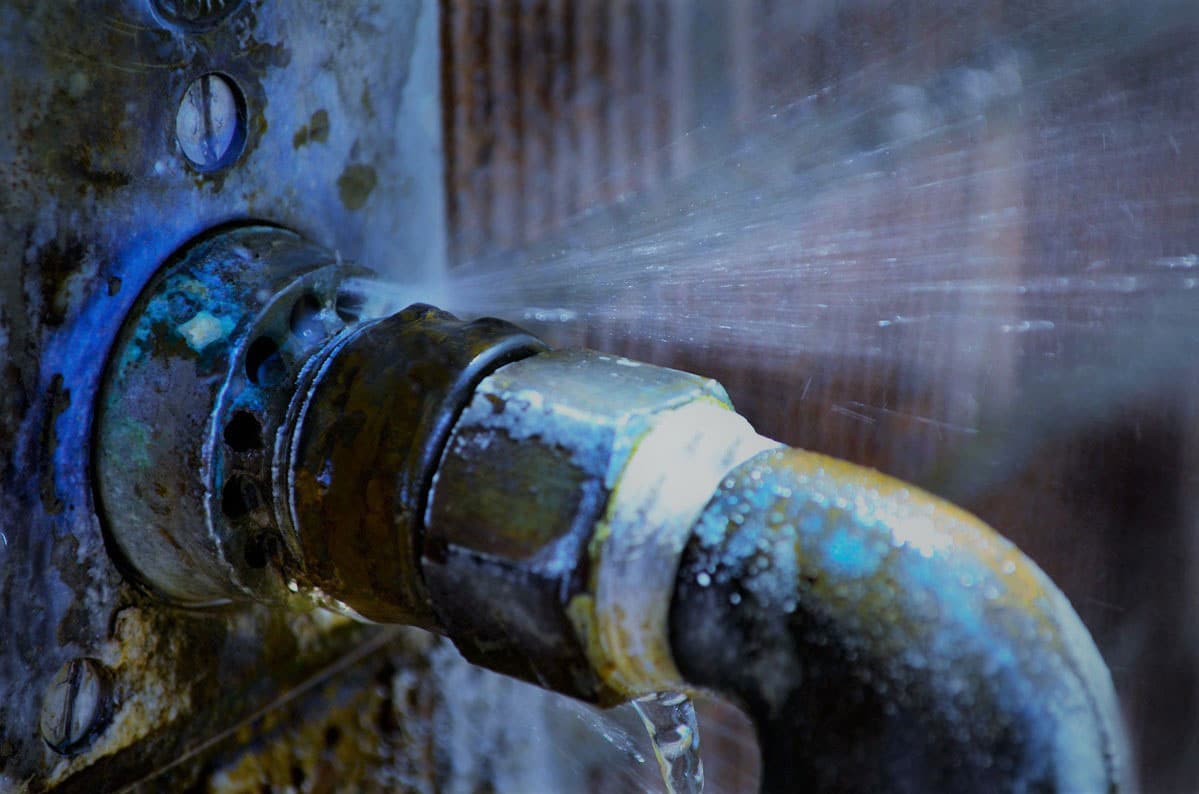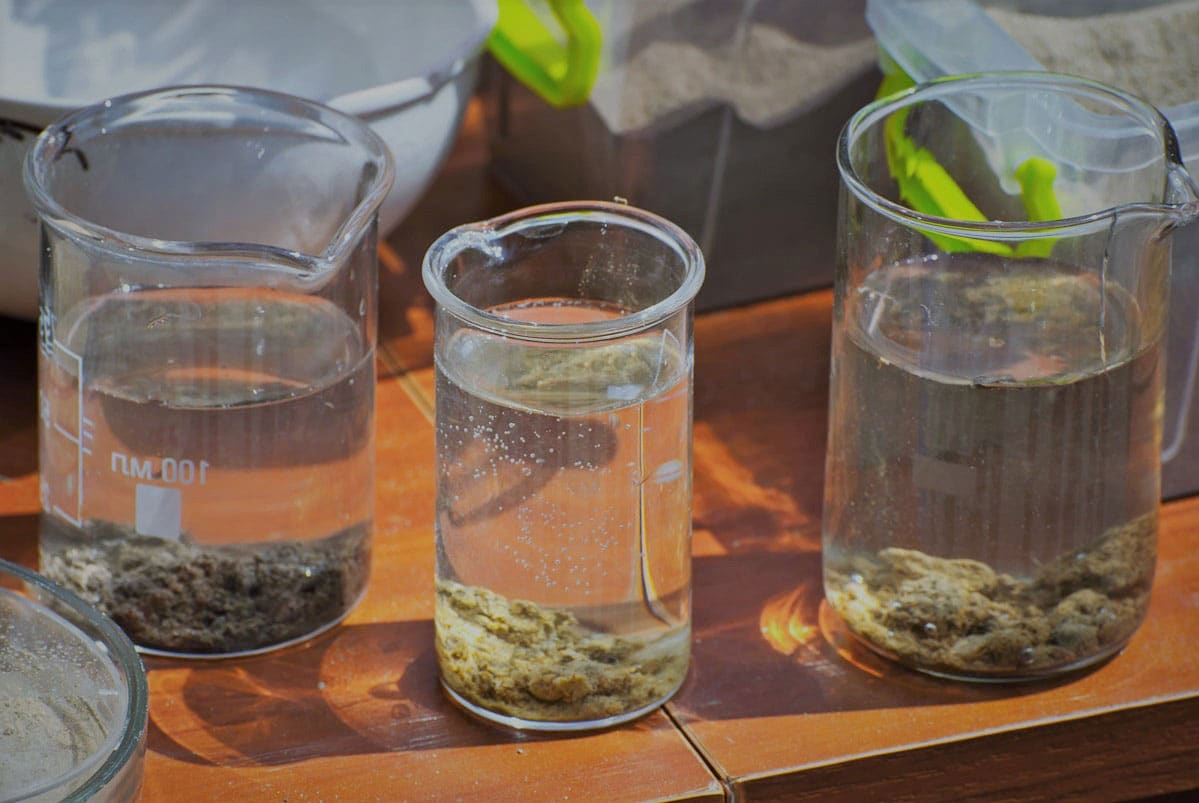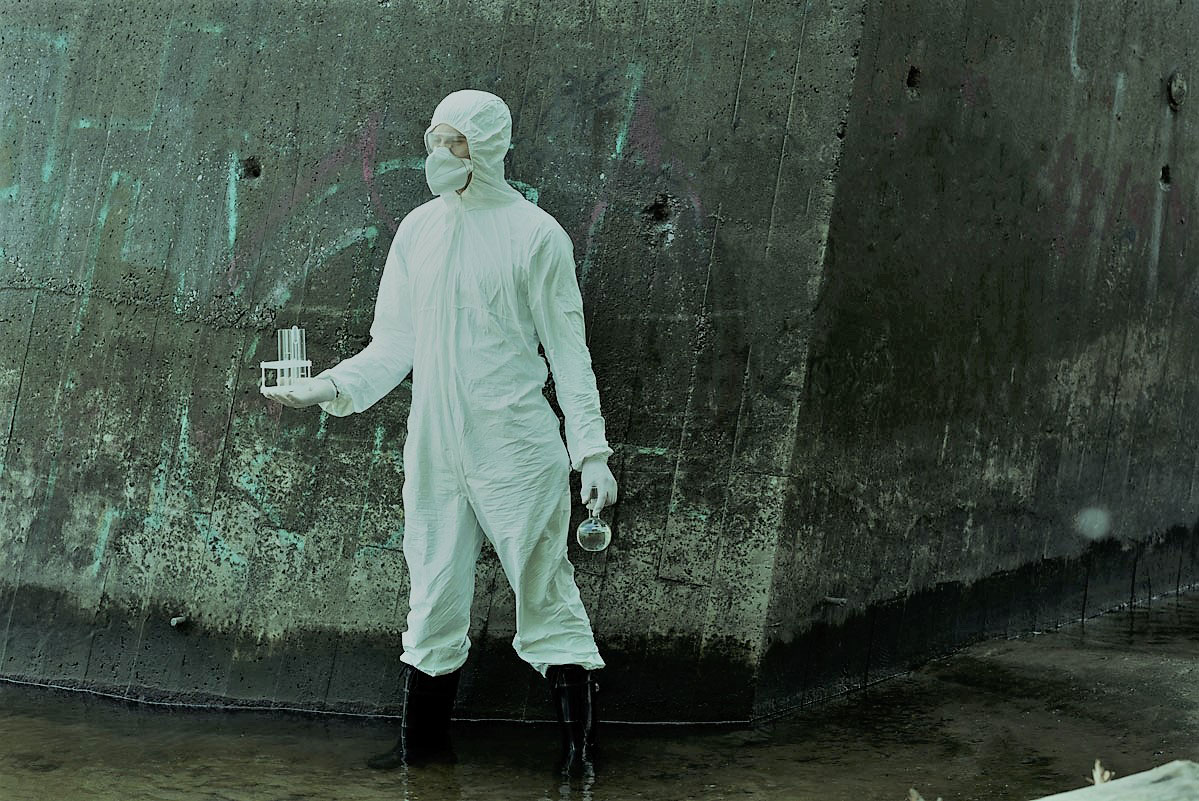Mold in Water
Can mold grow in water sources? This is the question we are going to answer in this article. We will look at different sources and types of water delivery systems for your home and investigate whether mold can grow in water or not.
Can mold grow in water?
The simple answer is yes, but there is much more to it than just mold being able to grow in water. Mold needs water or a moisture source to colonize, but it needs a “food” source in order to colonize as well. Something as simple as high nutrients in the water source will cause mold to grow in water.
Mold also needs a stable calm environment to grow. The movement of water, for example, will impede mold growth as it does not have time to colonize and grow. This means that mold is only able to grow in calm bodies of water with a lack of movement.
What causes mold to grow in water?
Mold grows in water sources where there is little to no water movement, and a suitable food source for the mold spores to feed on. Some great places for mold to grow in water are standing water in pools, water bottles, free-standing wells, and other bodies of water that are not in motion. If there is movement in the water, then the mold spores do not have time to attach themselves and feed on the nutrients and other items in the water supply.
Common signs you have mold in water
People often wonder if they have mold in their water. There are many signs you can look for to help you determine if you have a mold issue. If you have any of these signs, it is best to have your water tested by a professional.
Mold in water lines
In some circumstances, mold can grow in your water supply lines. This is very uncommon as there is usually enough water movement through the pipes to prevent mold from growing. The other factor in a mold not growing in most water supply lines is organic food matter. Unless there is a way for the organic matter to get into your water supply lines, mold will not be able to grow.
Some organic food sources that could affect your water lines would be a hole in a supply line allowing organic sources to feed into the water line or maybe a root that has grown through a supply line outside the home. Both cases would provide enough of a food source for the mold to be able to activate and start colonizing in the water pipes.
One thing to keep in mind, if you think you may have mold growth inside your water supply lines is that calcium buildup is common in water lines and could give a similar appearance to white mold spores growing inside your supply lines.
Clean out the mold that may be residing inside your water supply lines can be a daunting task. Short of replacing your entire supply pipes throughout your home, you can use a vinegar and baking soda solution and force it into your supply line outside your home. You will have to flush your pipes one at a time in order to make sure that the vinegar has run through the entire house.
Mold in water bottles
Water bottles are an ideal environment for mold to colonize and grow. There is ample moisture content, food sources are easy to enter the bottle through the top, and most times, the water is still for long periods of time inside the bottle if left.
The mold will start to grow as a floating growth on top of the water first. After it establishes itself on the top of the water surface inside the water bottle, it will then start growing on the sides and top of the bottle as it looks for more food to consume. You will see the green or black spots starting to grow on the sides of the water bottle as it is colonizing the area. If left to grow, it will eventually cover the entire inside of the water bottle that does not have water contact.
As with any other place with a mold colony growing, care should be used when removing the mold to not spread the spores to other parts of your home.
Cleaning mold out of your water bottle is a relatively simple process. Use a vinegar and baking soda solution and a bottle cleaner to scrub every part of the bottle to loosen up all mold and other contaminants from the inside surfaces of the bottle. Then, after that is complete and you cannot see any spots inside the bottle, rinse thoroughly with hot water to clean out the solution and dirt. Dry the bottle and leave it open to make sure the excess moisture inside can evaporate quickly on the counter. Remember, mold likes dark areas like cupboards so keeping it on the counter to dry will impede mold growth.
Mold in swimming pools
Mold is a naturally occurring substance in nature. You cannot avoid it. That being said, you can control mold growth on your property to keep it at safe levels that occur naturally and not create an issue with elevated growths in your swimming pool for example.
Mold grows in swimming pools because it’s a great source of moisture and organic materials for food. These plants will grow naturally. Chlorine and other pool chemicals do not promote mold growth as some pool owners may have read. They occur naturally. Mold is resistant to pool cleaning treatments that are used to treat other contaminants therefore a different approach is needed to get rid of mold in your pool.
Preventing mold in your swimming pool is much easier and more cost-effective than trying to remove a mold growth that is colonized. First and foremost is to open the lid of your pool for a few hours every day. Sunlight kills molds that grow inside your pool, so this is a natural defense.
Next up is to physically clean your pool and all its fixtures at least once a week. Scrubbing the deck, rails, ladders, filtration systems, and anything else that has regular contact with your pool.
Ladders and rails are very important as they become dirty very quickly from constant contact with people.
Oxidizing products can also combat mold growth in your swimming pool. Mold needs oxygen to grow, and oxidizing products impede oxygen content in the water of the pool so that mold cannot survive.
Lastly, you need to wash all your pool accessories regularly to ensure they do not contaminate your pool water as well. All floats, ropes, toys, and the solar blanket should be washed once a week to keep them clean and free from organic matter and mold growth.
Doing all of these will ensure that your swimming pool will be clean and free of mold and make your pool as healthy as possible for your family.
What types of molds can grow in water?
Molds are a type of fungus that can grow in water. There are many different types of mold, and they can grow in a variety of environments. Mold can cause health problems in people who are exposed to it, so it is important to be aware of the risks associated with mold exposure.
Black mold in water
A common classification or type of mold that grows in water is black mold. This mold is common and can grow in a variety of conditions. It will appear as black spots first, then as the colony grows on the substrate or water, it will take on the appearance of black circular growths connected to each other.
Black mold can cause a variety of health issues when people come in contact with it. It can create respiratory issues, dizziness, nausea, rashes, headaches, and more. It is highly advised that if you have black mold growing in water, or anywhere in your home, you contact the professionals at Mold Busters to provide a professional inspection, testing, and removal of the mold from your home.
White mold in water
White mold can give the appearance of calcium buildups in water. Therefore, proper testing for mold is essential to properly diagnose that what is growing is mold and not calcium build-up.
White mold can give similar health issues to black mold when you come in contact with it. Things like dizziness, nausea, headaches, respiratory issues, sneezing and depression are just some of the health issues caused by encountering white mold.
Is mold in water dangerous?
Mold in water can be very dangerous if not remediated or improperly removed. As I mentioned above in the previous section, the effects of encountering mold in water can be very detrimental to the health of your family. Both white and black mold spores can create a wide range of health issues.
The health issues range from sinus issues i.e., a runny nose and sneezing to more serious symptoms including respiratory and breathing issues as well as headaches and even severe depression. If you are having any of these symptoms and are having trouble pinpointing what is causing them, contact Mold Busters to schedule an inspection and testing visit to your home to make sure your home is safe from mold. We also offer an online mold inspection service for your convenience.
How do you prevent mold in water sources in your home?
In order to prevent mold growth in water sources throughout your home, you need to remove one or more environmental conditions that will cause mold to grow. We are talking about water right now, so removing water from the mold growth equation is not going to work here.
We need to remove one or more of the remaining conditions. Food sources are next in line to stop mold from growing in and around water sources inside and outside your home. Keeping sinks, pools, water bottles and other fixtures clean from dirt and debris goes a long way to stop mold from growing and establishing itself around your home. If you’re in Ottawa, consider our expert mold removal in Ottawa to ensure your home is safe and mold-free.
Introducing sunlight will also stop mold from colonizing. Keeping pool covers and window coverings open during the daytime will let sunlight penetrate your home and impede mold growth.
Sometimes you cannot do everything to stop mold from growing and in those situations, you need Mold Busters to visit your home, perform a complete inspection and remediate any mold you have growing around your property.
Frequently asked questions
Can mold grow in distilled water?
Mold can indeed grow in distilled water. Most methods of distillation still allow trace elements and compounds to be present in the water, therefore, bacteria and fungi can still grow and survive in distilled water.
Can mold grow underwater?
Mold needs oxygen to grow and survive. Water has oxygen present in it, however, it is not in a large enough concentration to allow the growth of mold. Mold will grow on the surface of the water where it can obtain enough oxygen and food sources to thrive.
Does boiling water kill mold?
You may read about the boiling water protocol when talking about washing mold-laden textiles and other objects. Boiling water works wonders to help remove mold from textiles and other objects. However, it does not kill mold. You would need to use a much higher boiling point to kill mold on surfaces, therefore, boiling water does not kill mold spores. To have mold properly removed from household items or sources, contact Mold Busters to have the mold inside your home professionally remediated. If you’re located in Montreal, you can rely on our professional mold remediation in Montreal.
Can mold in water make you sick?
The presence of mold in water can make people sick by producing and releasing mycotoxins and other substances that cause health problems. Nonetheless, it is important to note that not all molds can produce toxins and not all molds live in water; some live on the surface of food, textiles, and many other items we come into contact with.

Get Special Gift: Industry-Standard Mold Removal Guidelines
Download the industry-standard guidelines that Mold Busters use in their own mold removal services, including news, tips and special offers:
Published: March 4, 2022 Updated: August 3, 2023

Written by:
Steven Adams
AMRT, WRT, ASD
Mold Busters
Fact checked by:
Michael Golubev
CEO
Mold Busters

